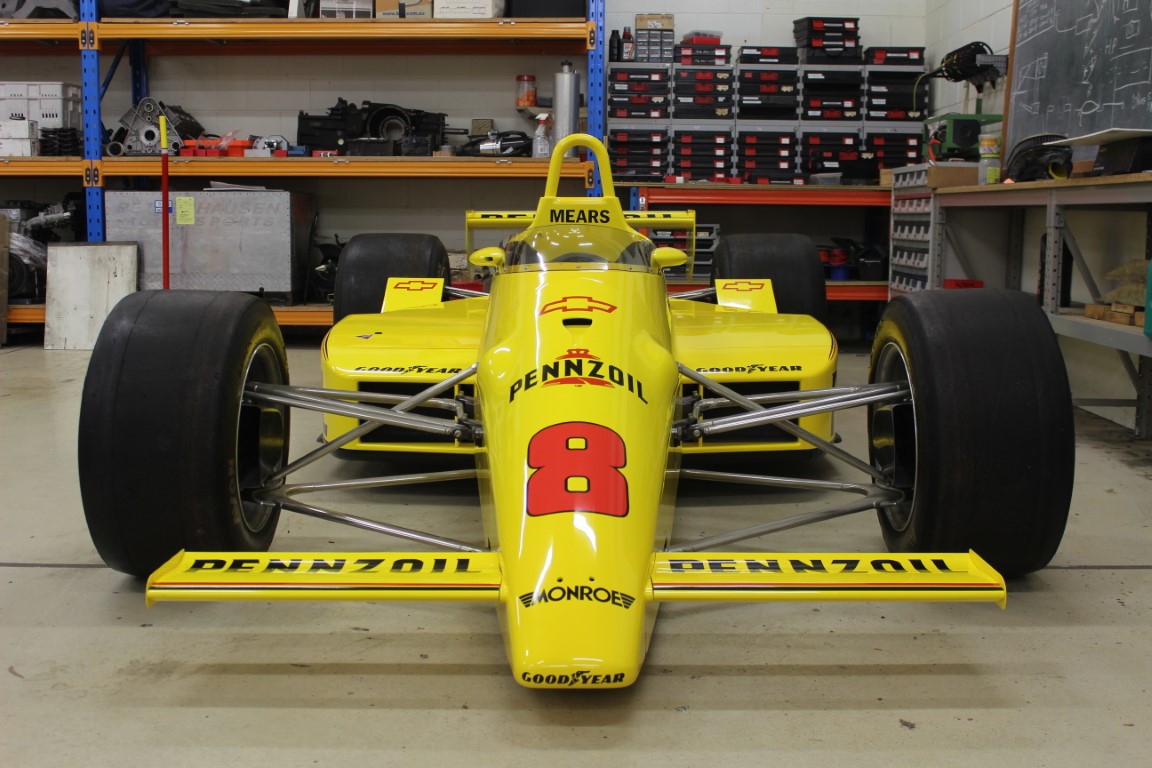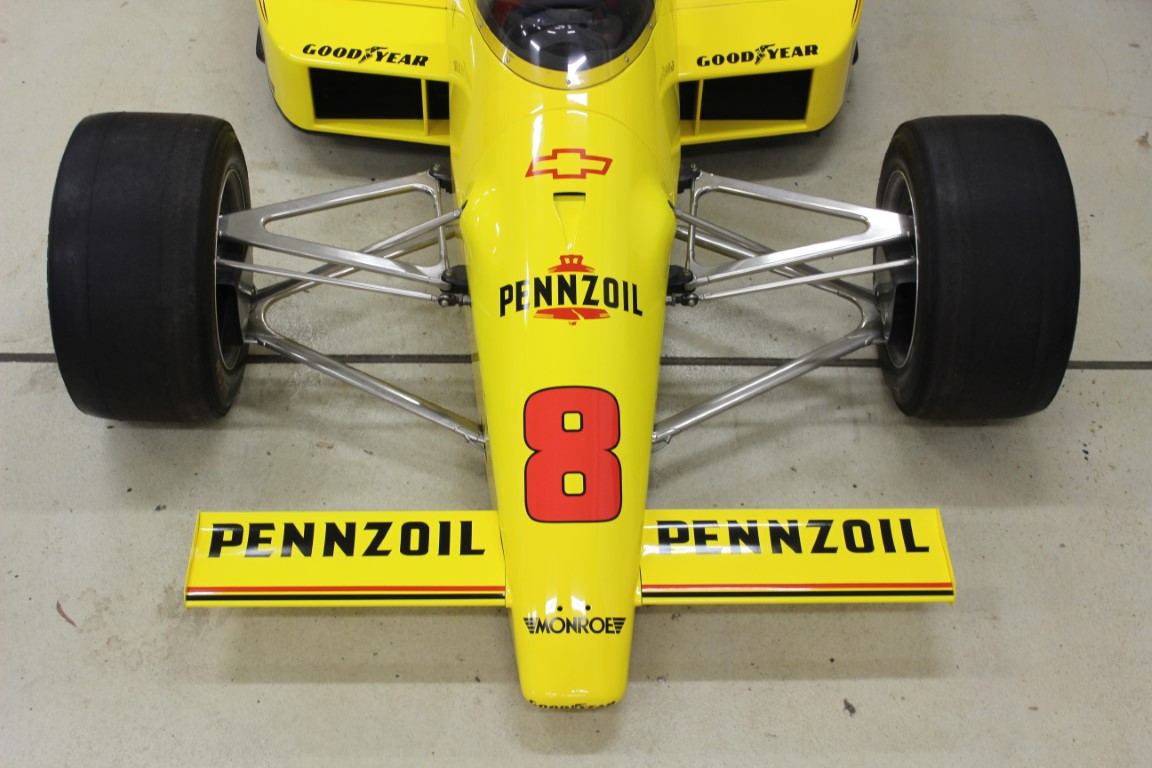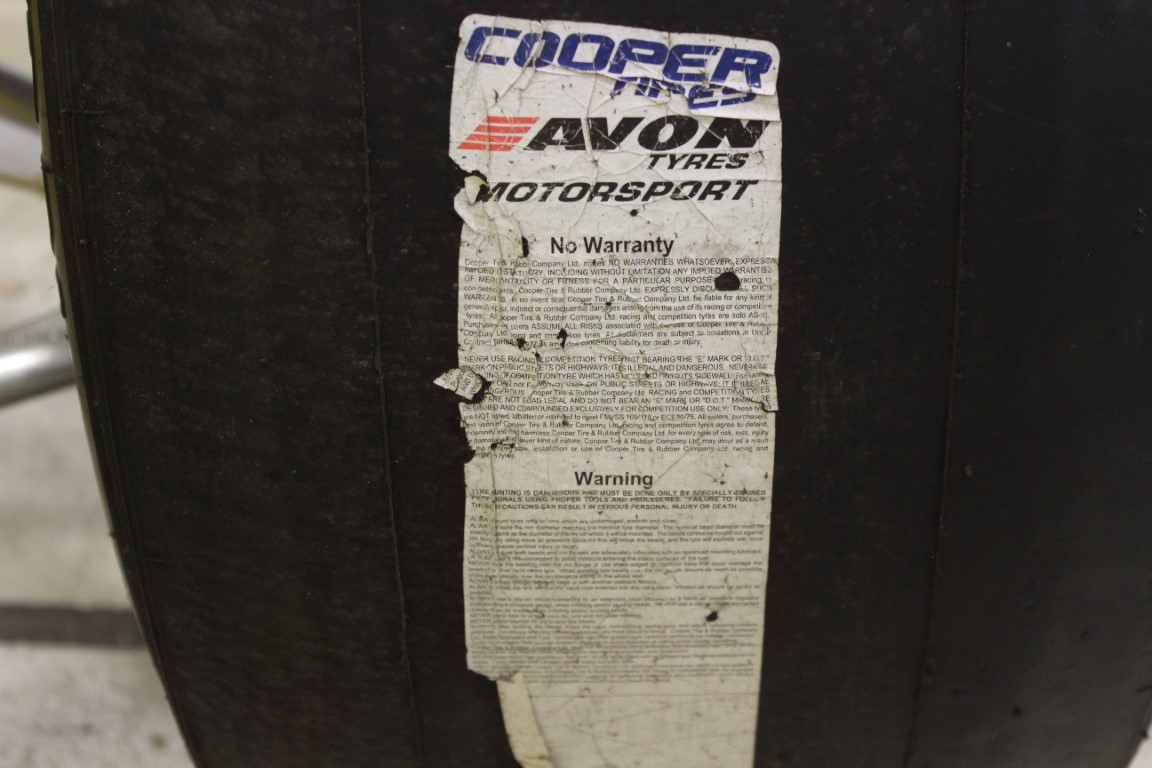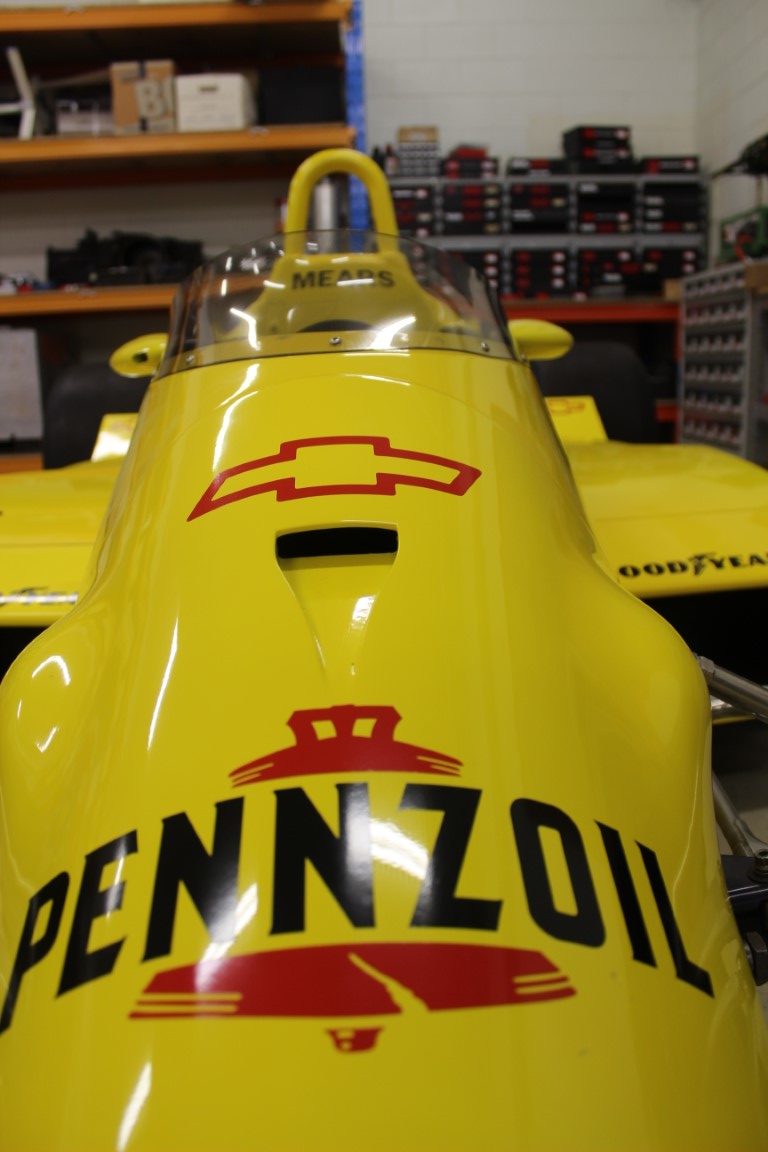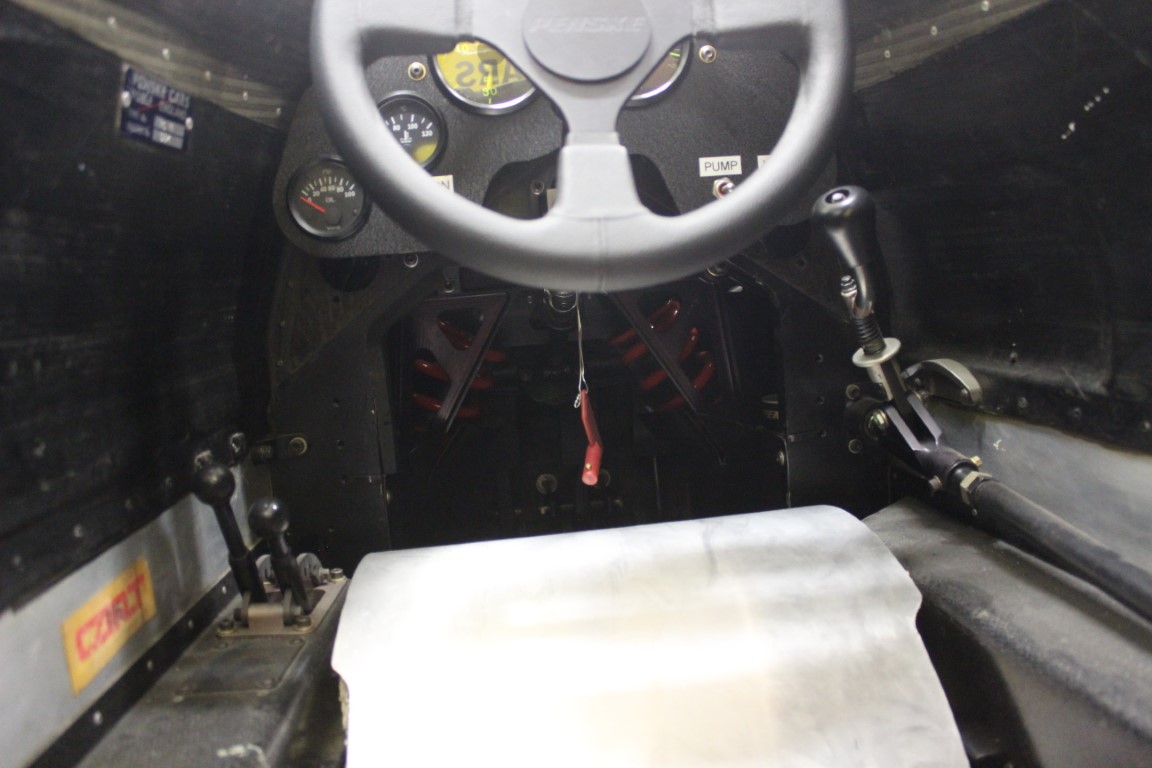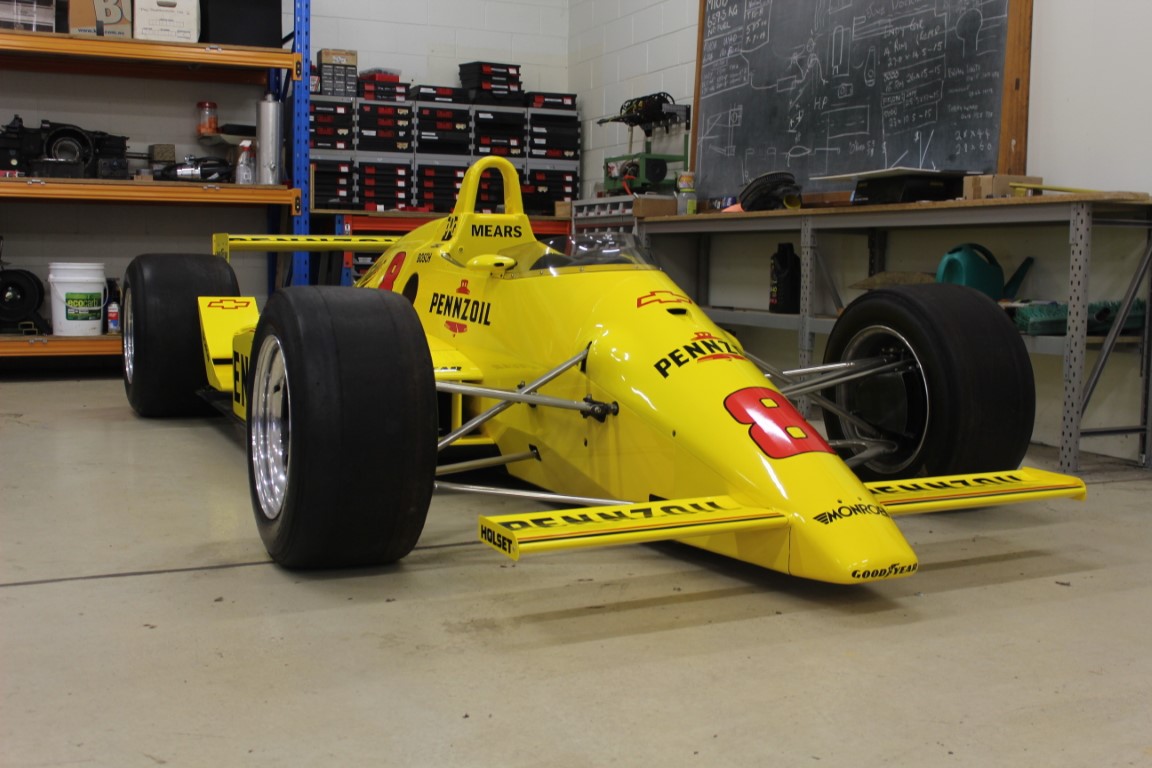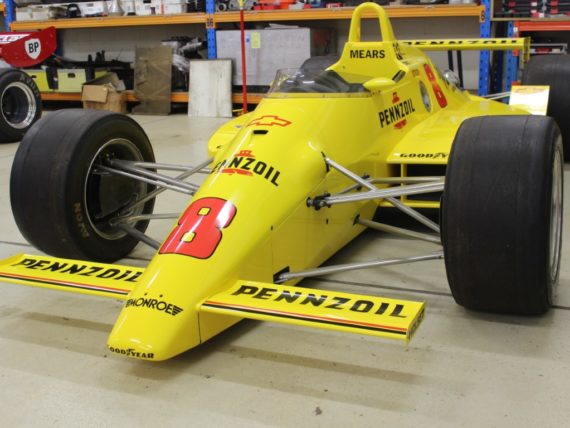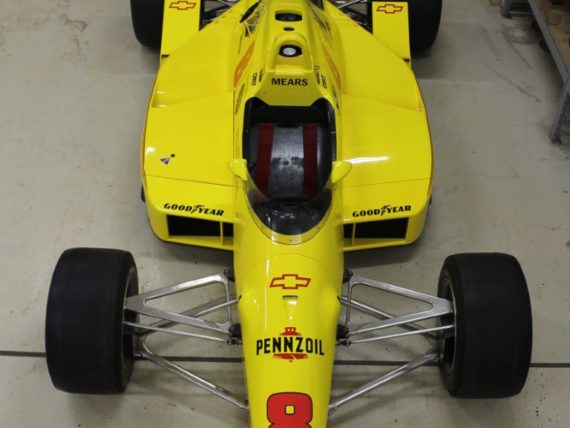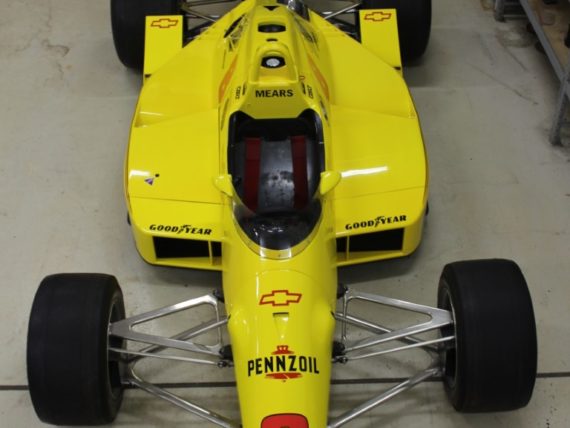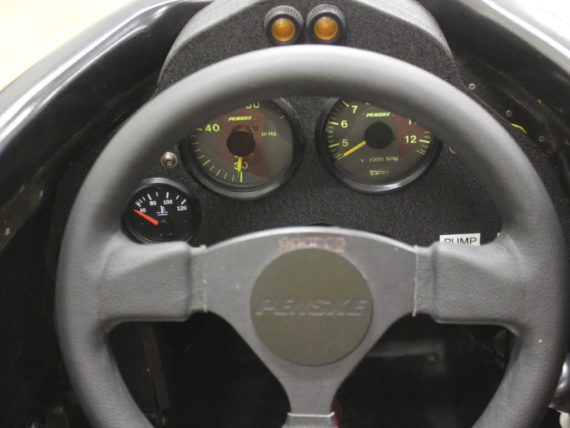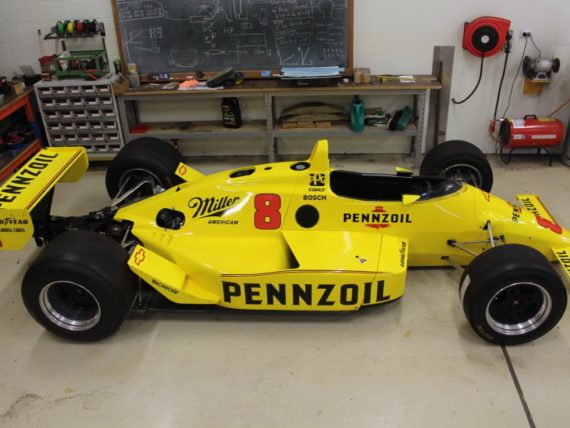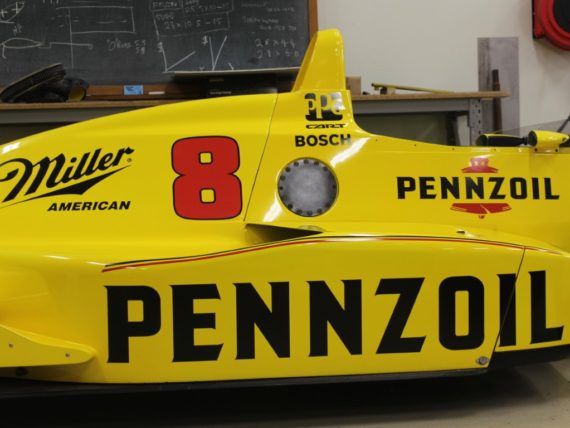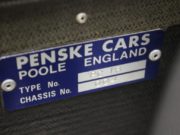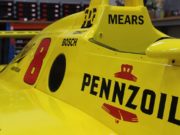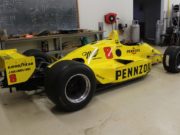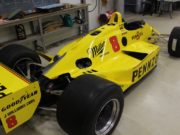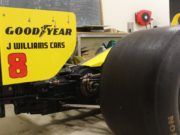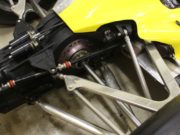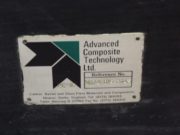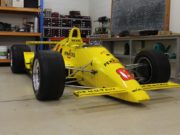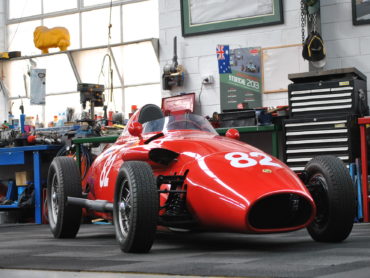1987 Penske PC16 Indycar
Price AUD $245,000
Description
The Penske PC 16 was developed for the 1987 CART PPG Indy Car World Series season and raced at several events for that year. In total Penske built 4 cars, with this car, Chassis 004 being driven by four-time Indy 500 winner Rick Mears and sponsored by Pennzoil. The car unfortunately faced several teething issues and was not totally competitive early in the season. Come the Indy 500 the car started the first week of practice and was still struggling for pace. Roger Penske ultimately decided to revert to the previous year’s car for the final practice, qualifying and race. The challenge of developing an entirely new chassis and engine simultaneously proved problematic for the PC16, the lack of ultimate pace led to the mid-season abandonment of the car and the firing of designer Alan Jenkins. Whilst the program was abandoned the car did post some competitive results towards the end of its tenure with Mears finishing 3rd at Portland and two top 10 results at Cleveland and Toronto. Building from the foundation of the PC16 Penske, with new chief designer Nigel Bennett developed the PC17 which became one of the most competitive and winning cars in Indycar. After 1987 this car, chassis 004 belonged to Pennzoil and was almost immediately sold to Penrite Australia as a display car. The car came without an engine and after some correspondence between the oil giants, Roger Penske sent a complete engine to be displayed with the car. The car was used for displays and placed in storage until 2016/2017 where the current owner purchased the car and commenced its restoration back to racing condition. All parts of the car were stripped, inspected, and replaced, as necessary. Since the car had done so little actual racing it was in extraordinarily good condition. Since there was little information on the condition of the display engine, VDS Engines was commissioned to construct a complete, new engine for the car. A dyno run of the engine confirms 750 HP is available. The original wheels are with the car but 2 ½ new sets of wheels have been made from 7000 series aluminium centres for 3-piece rims. All suspension bearings have been replaced, all brake callipers stripped and rebuilt with new brake discs, a new fuel tank bladder fitted, instruments checked and calibrated. After a considerable recommissioning, this car presents a rare opportunity to purchase a high quality, working Penske built Indycar. The display engine is also separately available for sale and is reputed to have been supplied from Penke’s stock of fresh rebuilt engines.1987 Penske PC16 Indycar
Price AUD $245,000
Description
The Penske PC 16 was developed for the 1987 CART PPG Indy Car World Series season and raced at several events for that year. In total Penske built 4 cars, with this car, Chassis 004 being driven by four-time Indy 500 winner Rick Mears and sponsored by Pennzoil. The car unfortunately faced several teething issues and was not totally competitive early in the season. Come the Indy 500 the car started the first week of practice and was still struggling for pace. Roger Penske ultimately decided to revert to the previous year’s car for the final practice, qualifying and race. The challenge of developing an entirely new chassis and engine simultaneously proved problematic for the PC16, the lack of ultimate pace led to the mid-season abandonment of the car and the firing of designer Alan Jenkins. Whilst the program was abandoned the car did post some competitive results towards the end of its tenure with Mears finishing 3rd at Portland and two top 10 results at Cleveland and Toronto. Building from the foundation of the PC16 Penske, with new chief designer Nigel Bennett developed the PC17 which became one of the most competitive and winning cars in Indycar. After 1987 this car, chassis 004 belonged to Pennzoil and was almost immediately sold to Penrite Australia as a display car. The car came without an engine and after some correspondence between the oil giants, Roger Penske sent a complete engine to be displayed with the car. The car was used for displays and placed in storage until 2016/2017 where the current owner purchased the car and commenced its restoration back to racing condition. All parts of the car were stripped, inspected, and replaced, as necessary. Since the car had done so little actual racing it was in extraordinarily good condition. Since there was little information on the condition of the display engine, VDS Engines was commissioned to construct a complete, new engine for the car. A dyno run of the engine confirms 750 HP is available. The original wheels are with the car but 2 ½ new sets of wheels have been made from 7000 series aluminium centres for 3-piece rims. All suspension bearings have been replaced, all brake callipers stripped and rebuilt with new brake discs, a new fuel tank bladder fitted, instruments checked and calibrated. After a considerable recommissioning, this car presents a rare opportunity to purchase a high quality, working Penske built Indycar. The display engine is also separately available for sale and is reputed to have been supplied from Penke’s stock of fresh rebuilt engines.Gallery
